Despite being a calligraphy exhibition, "Kyuyo Ishikawa complete works : Later Period [Situations]" gives the impression of an art exhibition. Through conversations and reading the descriptions of the displayed works, we delve into the background and gain the necessary preliminary knowledge as we approach the final section.
Following vol.2, which showcased a period rich in pictorial impressions, we now arrive at the fifth and final room. Here, we present Kyuyo’s works that depict words he has woven himself up to the present day.
Works of Self-Woven Poems and Writings with Pictorial Imagery
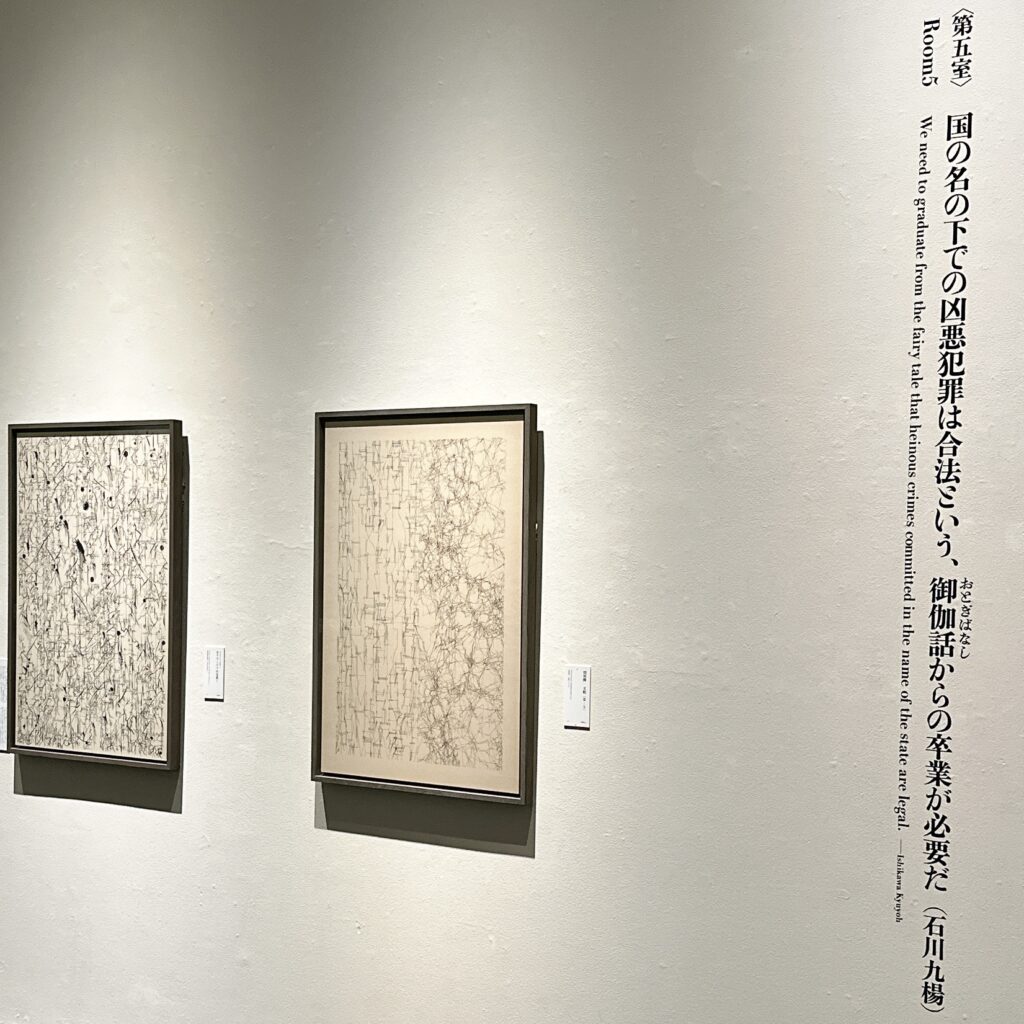
These self-composed poems and writings focus on themes of global crises. While they possess a surrealistic and pictorial atmosphere, they are entirely composed of characters and written words originating from Kyuyo himself.
Utilizing the characteristic of calligraphy that considers the balance of empty space, Kyuyo writes in a manner that interferes with the characters in the rows on the right. This connection of lines, despite being made up of characters and words, creates an impression reminiscent of paintings or art pieces.
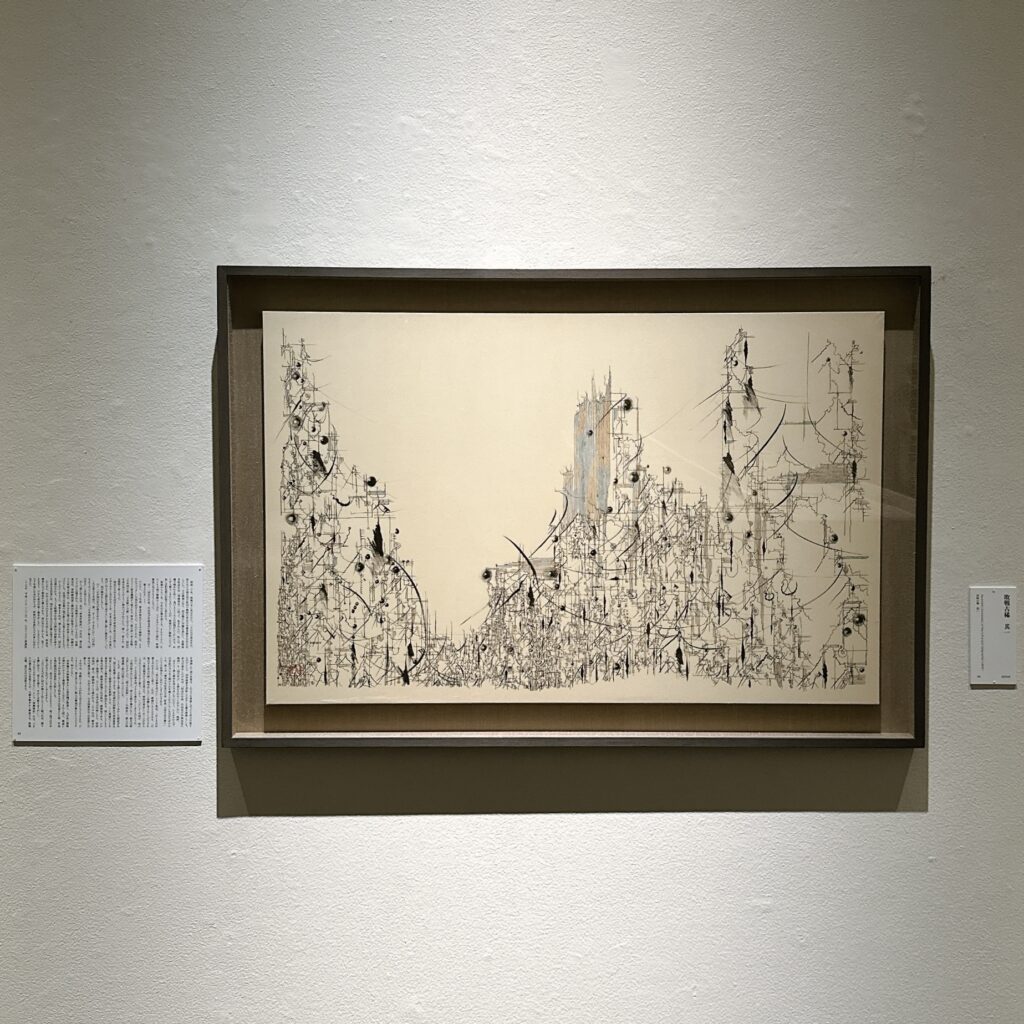
Astonishingly, this work contains the text displayed on the left side. Although it is written from the top right, the amount of information packed into the space while maintaining such ample margins is impressive.
The composition resembles a landscape, be it a town or a rural area, which is intriguing. This is reminiscent of certain paintings. The overall atmosphere evokes Magritte, while the detailed execution brings Hieronymus Bosch to mind.
Born in the year of defeat, Kyuyo feels as if he witnessed the wartime as a fetal memory. From this, he writes about the thoughts he has digested from the information he has gathered throughout his life in "The Seventieth Year of Defeat: Part One."
Despite the abundance of text and information, the ample margins leave room for viewers to ponder and interpret the work themselves.
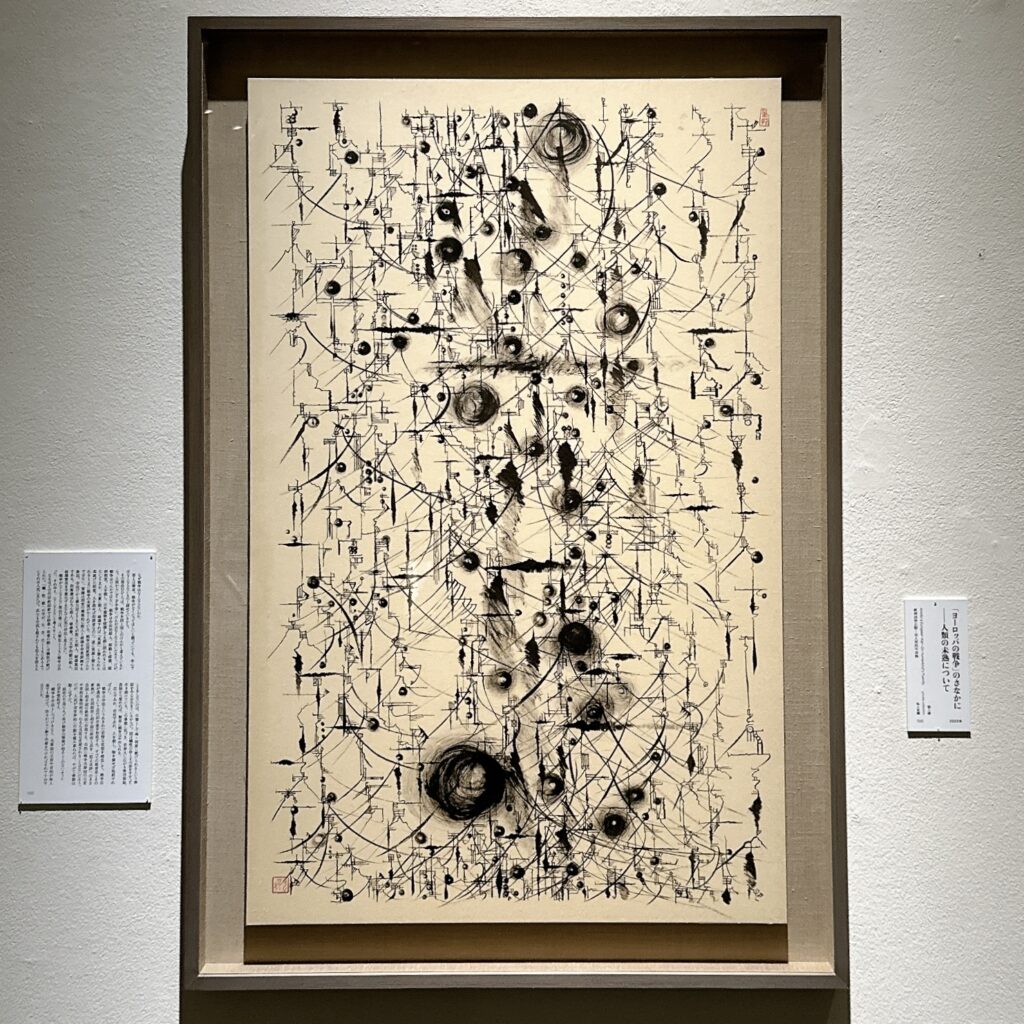
This piece is a personal favorite of the author. Discovering this work online led to an immediate desire to see the exhibition in person.
The work strongly evokes the atmosphere of Paul Klee's pieces such as "Fate of a Bassoon Solo" and "Ideology of a Tower" (both 1918). Both are notable for their impressive use of line variations. Although calligraphy did not exist in the West, similar expressions were perhaps made.
Additionally, the variously sized circles represent characters such as mouth (write in Kanji : 口) , field(write in Kanji : 田) , and sun(write in Kanji : 日) . Upon closer inspection, one can indeed see the word "world (write in Kanji : 世界)" written! Such discoveries make the viewing experience enjoyable. The more you look, the more new findings emerge, making it genuinely fascinating.
Differences in the use of hard handwritten characters also give off a calligrapher-like quality.
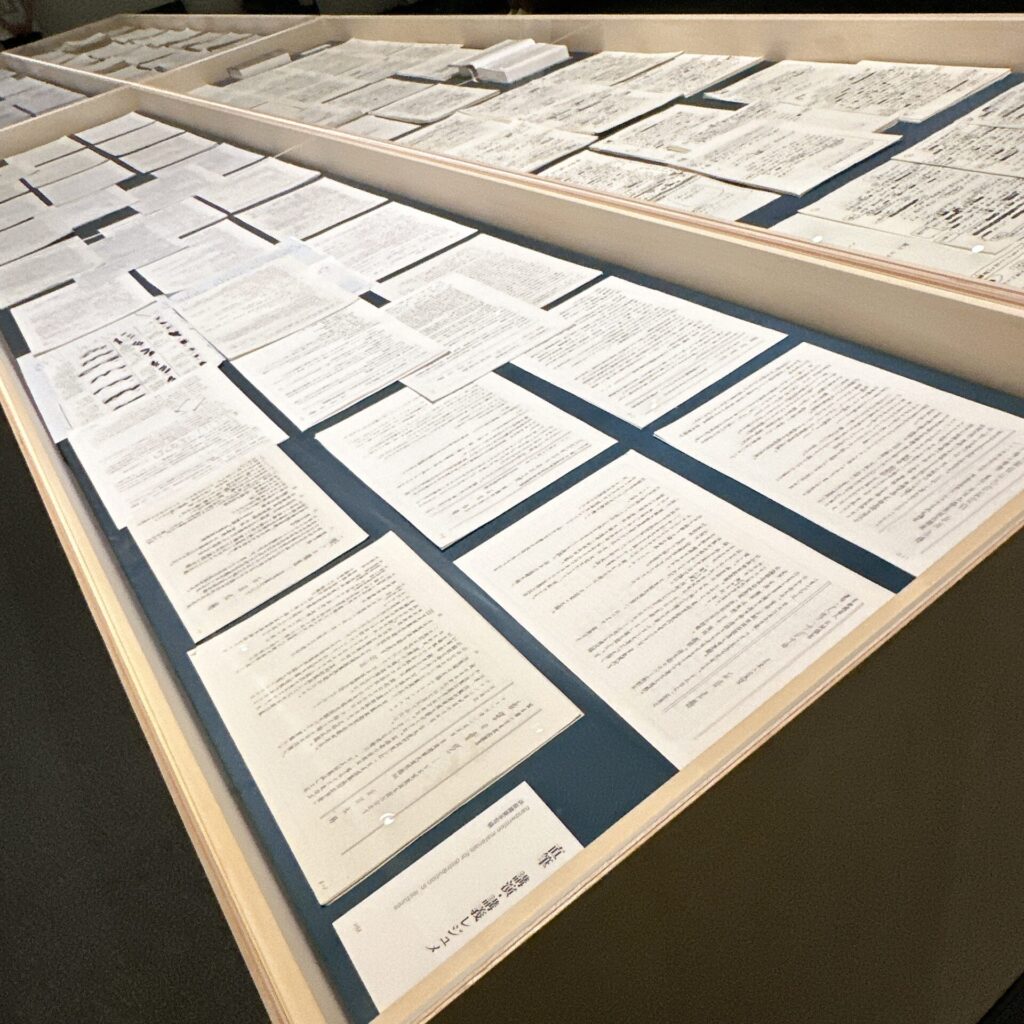
Here is a document written "for others to read." The beautifully arranged format and writing are designed for a wide audience to view and read.
The meticulously crafted characters resemble a font, showcasing Kyuyo's fundamental skills. This high level of basic training is evident not only in calligraphy but also in these instances. It even makes one think a "Kyuyo Font" could be created by scanning these works.
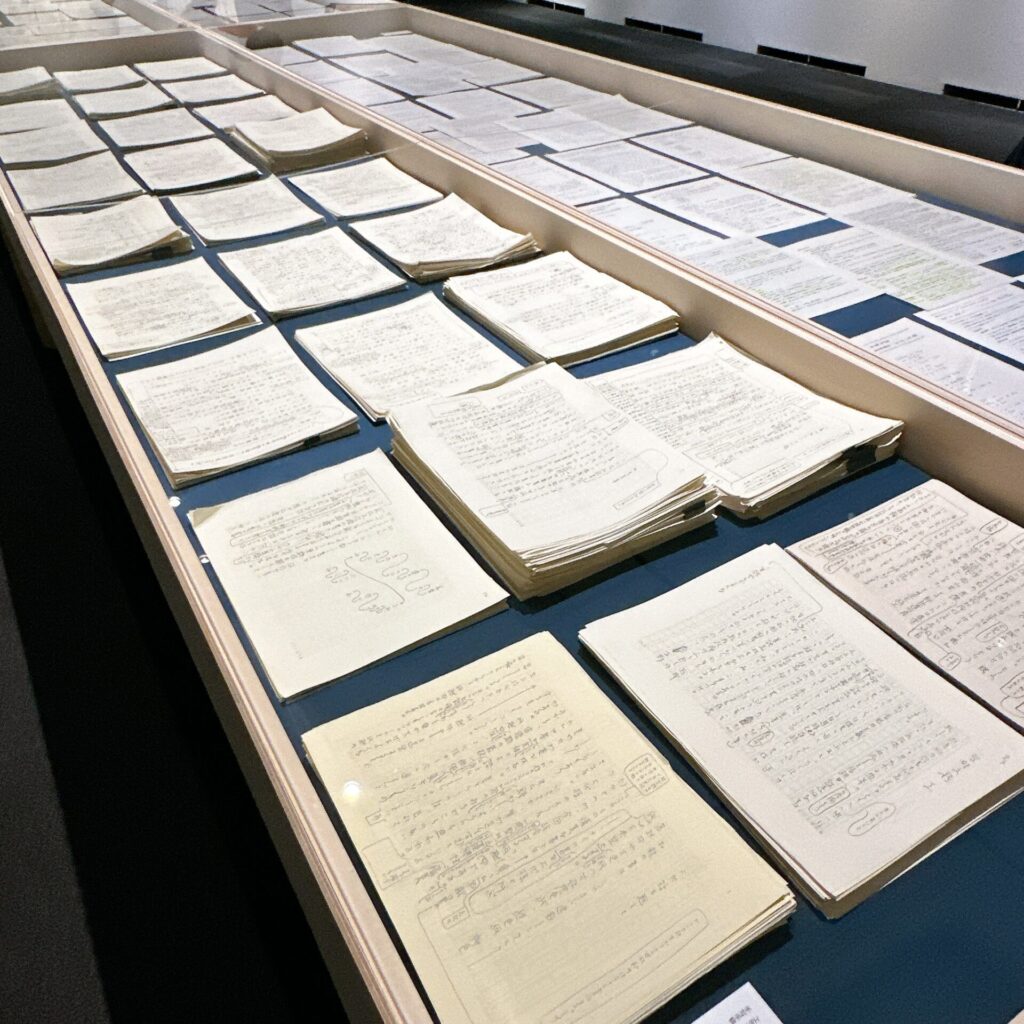
This is a manuscript for books and other writings. Intended for Kyuyo and specific individuals, the characters differ from those in the aforementioned document.
Though the focus seems more on progress than neatness, the readability remains strong.
Kyuyo, with an impressive number of published works, must have an even larger volume of manuscripts. Besides books, there are also texts that serve as the basis for his calligraphic works, akin to seeing the infant stage of a piece.
Surprising Discoveries at the Entrance
Upon entering the exhibition, the wall on the right up to the end features photo-friendly displays. Unbeknownst to me, I had seen Kyuyo's works before...
Kyuyo's Contributions to the Upcoming Taiga Drama
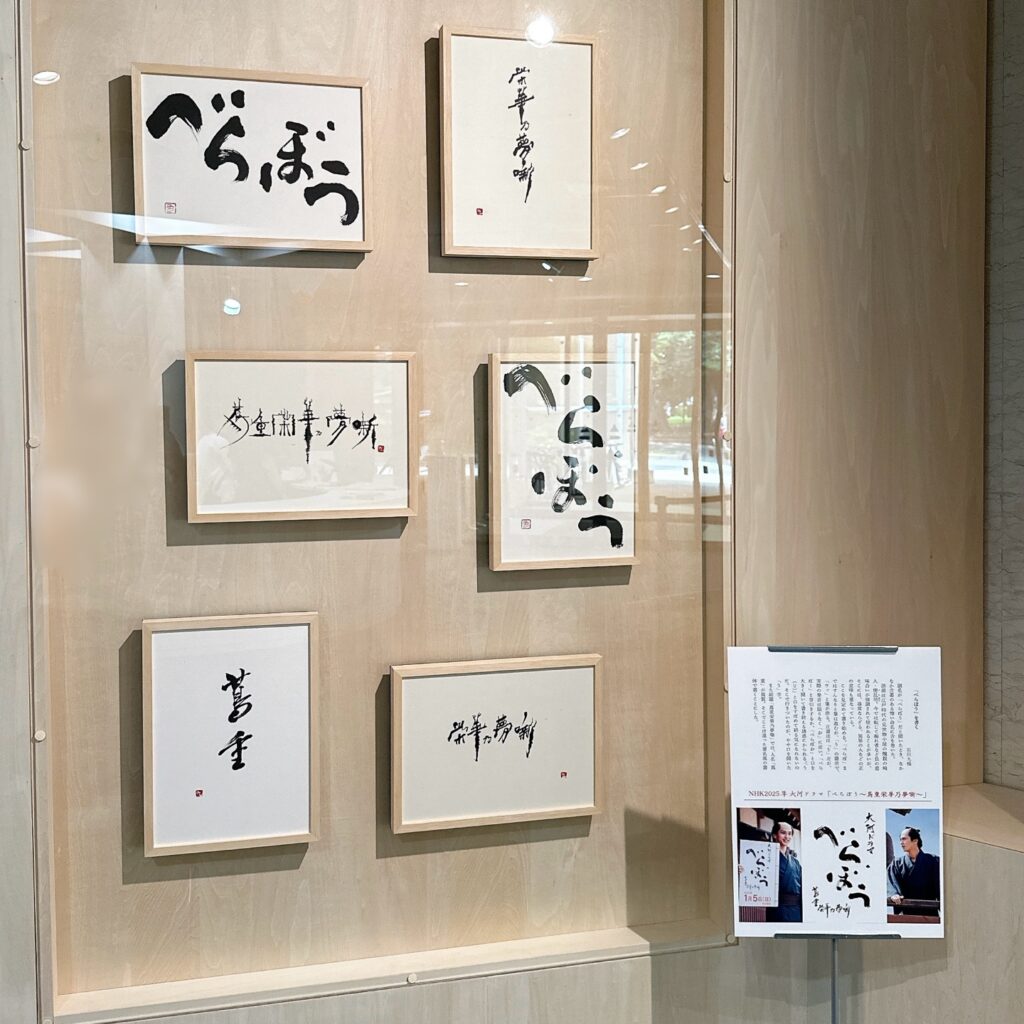
Taiga drama that many people watch enthusiastically.Although I haven’t watched them myself, I was surprised to learn that Kyuyo was responsible for the title calligraphy! (*Taiga dramas are TV dramas based on Japanese history.)
The kanji works have a familiar feel, but the hiragana "Berabo" feels approachable and friendly. The actual title piece is with NHK, but its atmosphere can still be felt.
It's exciting to imagine how it will appear with video effects in the new Taiga drama coming next year.
Kyuyo's Work on the "Hakkaisan" Sake Label
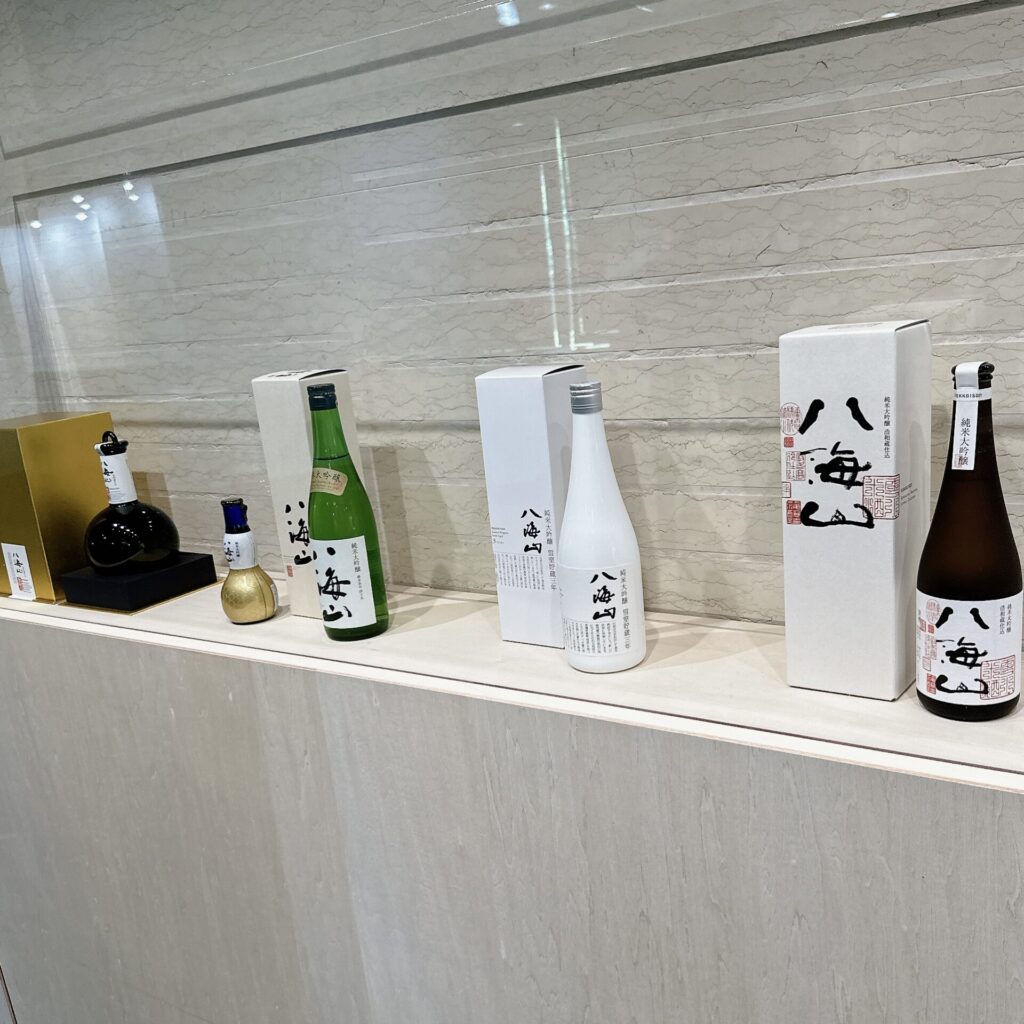
As a lover of Japanese sake, I was surprised to learn that Kyuyo designed the "Hakkaisan" label. Did you know this?
Commonly found in many establishments, "Hakkaisan" is a familiar name. Knowing this adds a new dimension to enjoying the sake next time.
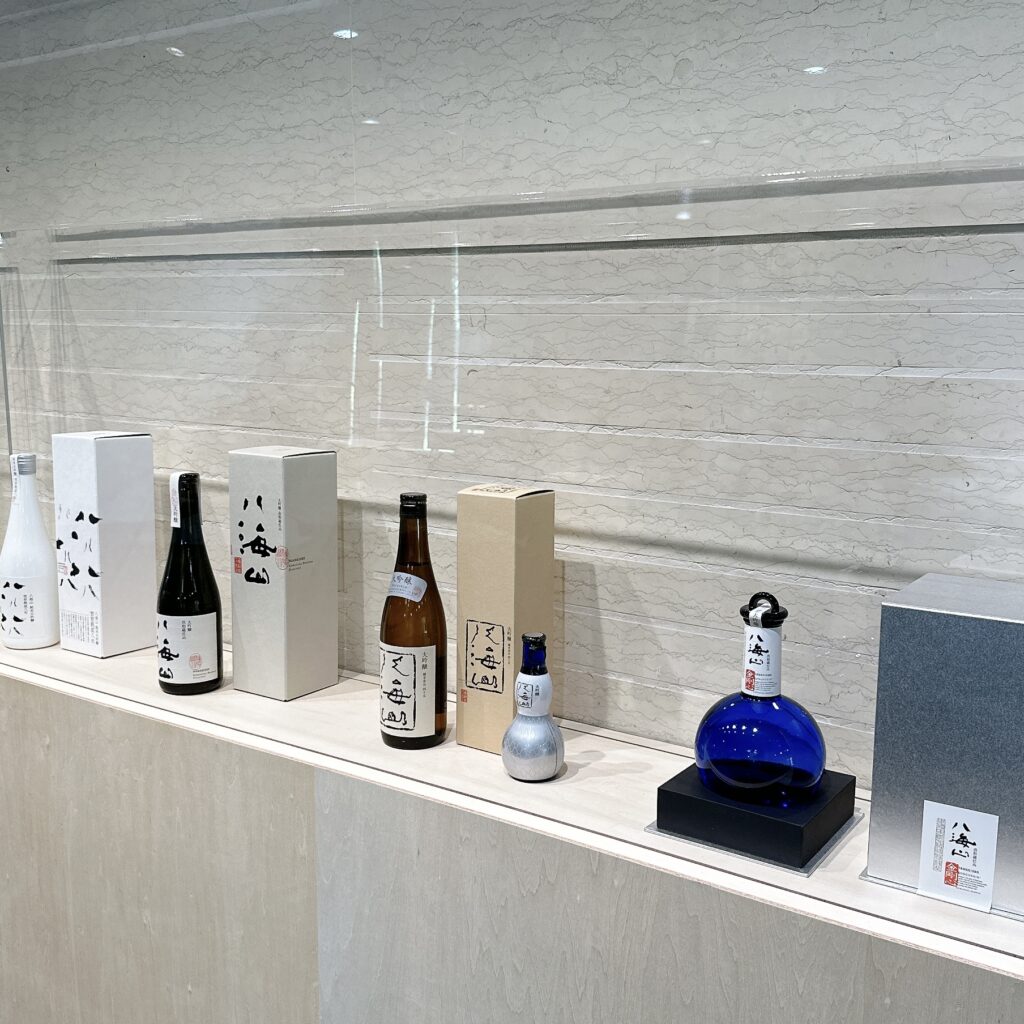
This is also Hakkaisan, but each one has a slightly different flavor and is interesting.
"Kyuyo Ishikawa complete works : Later Period [Situations]" Runs Until July 28 at the Ueno Royal Museum!
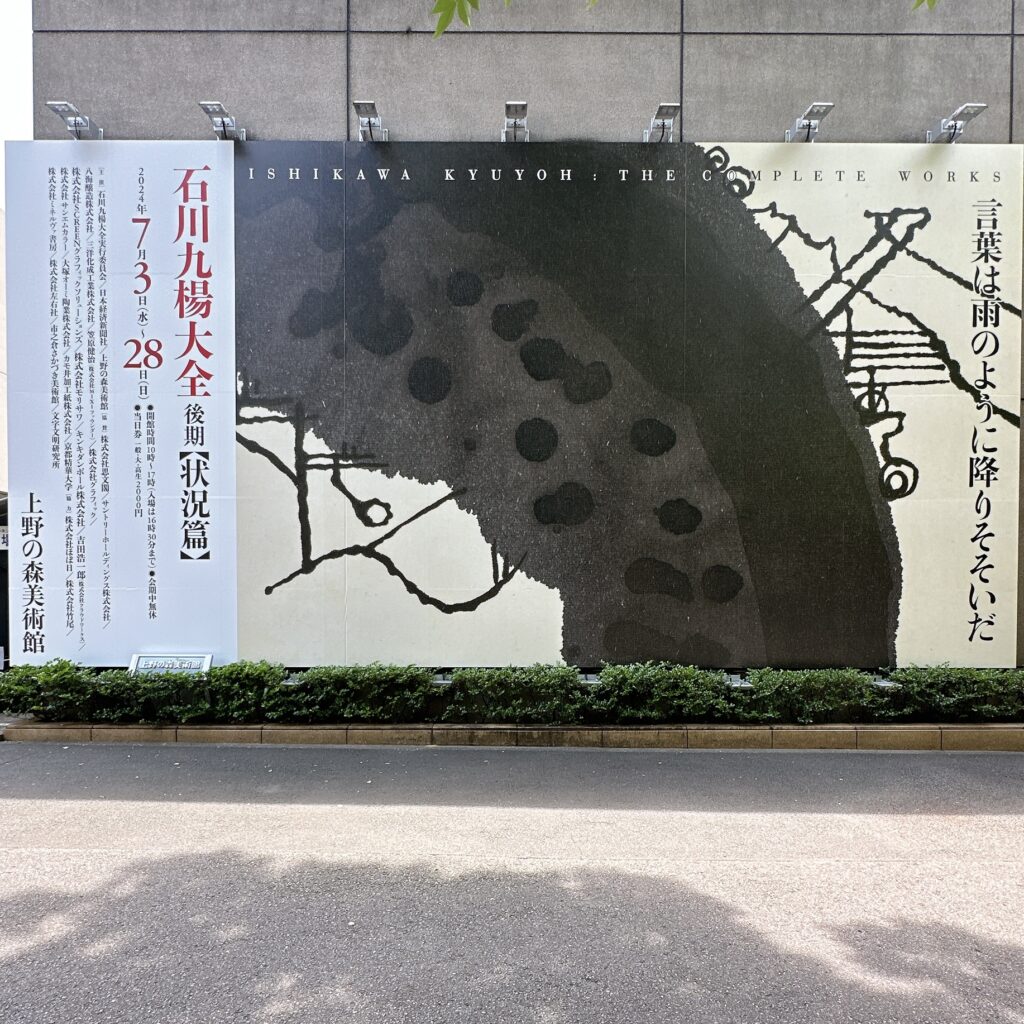
The exhibition runs until July 28, 2024. With two weeks remaining, there’s still a chance to visit.
While it’s enjoyable for adults, there are elements for children as well. For a relaxed experience, weekday mornings are recommended. However, the spacious layout allows for a pleasant visit even if slightly crowded.
The exhibition lightens the potentially daunting image of a calligraphy exhibition. It’s perfect for those seeking new experiences. I encourage you to open a new door and visit!
Official Site of "Kyuyo Ishikawa complete works"
Purchase Tickets Here
A Little Extra: Enjoying Ueno After the Exhibition
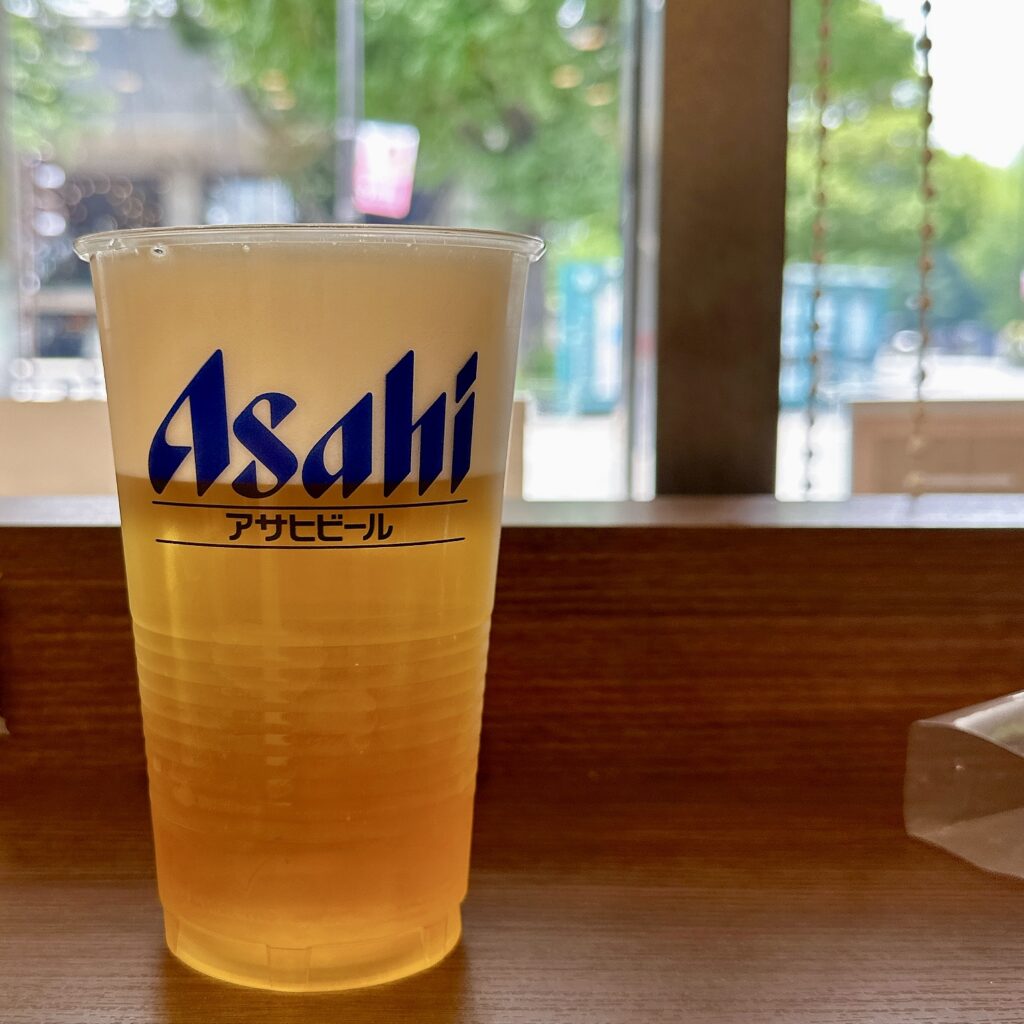
Speaking of Ueno, what comes to mind is enjoying a beer in the shade on a hot day! Though it was too hot this time, I enjoyed it indoors, reminiscing about the exhibition. The beer tasted exceptionally good while reflecting on the exhibit—an unbeatable experience!
